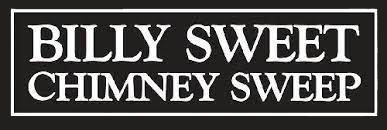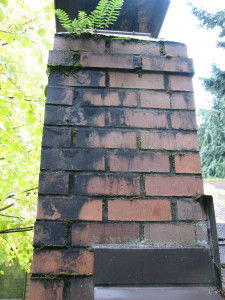Identifying Chimney Discoloration
Keeping your chimney clean and healthy with regular sweeping and inspections is something that we encourage everyone to do, and not doing so can lead to some really nasty developments later on in your chimney’s life. Because the masonry of your chimney is porous, meaning it allows water to be absorbed and released through small holes, water can often get trapped and degrade the brick, as well as the inner chimney lining. The moisture provides perfect conditions for mold to flourish, and as it develops, could eventually lead to mold developing in your home. Along with mold, a substance known as efflorescence develops, which is also due to high moisture.
Efflorescence:
It’s easy to confuse mold and efflorescence growth on a chimney because they look so similar. They can come in colors of white, brown, green, or yellow, or even a combination. But unlike mold, efflorescence is actually just a response to water moving around in the masonry. The freezing and melting of water over time causes the salts in the brick to shift, causing visible patches of salt in various colors. The color composition results from other minerals like manganese and magnesium that create brown and greenish stains, respectively.
Mold:
Compared to efflorescence, mold is even more damaging because it can infect your home and your well being. With a characteristic musty smell, you may also notice peeling paint or cracks developing on your walls. These signs are dangerous and mean that the mold has spread from the masonry of your chimney, down the inner lining, and into your home. Mold can cause problems with your health over time, causing respiratory problems like congestion, coughing, and irritation. Even if you don’t see signs of mold in your home, if you begin to have these symptoms, see a doctor immediately, and then call us so that we can evaluate the damage.
What can I do to stop discoloration?
For efflorescence, the real problem isn’t the discoloration, it’s the moisture that will eventually render your chimney unusable and damage your home. Mold can threaten your home and your health, so treating this should be a much more sensitive and thorough issue. If you see discoloration on your chimney walls, the first step is ensuring it hasn’t affected your well being or that of your house. Once that is determined, the solution is finding where the moisture is coming from that is causing the discoloration. In some cases, it is an improperly sealed or cracked chimney. Other times a cap is missing that will keep water from seeping into the walls. Either way, keeping up with regular maintenance is absolutely necessary to keep this from happening. If you see mold, efflorescence, or any discoloration on your chimney, call us immediately!

